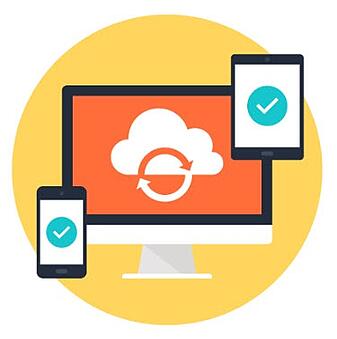4 Ways to Take Total Advantage of Your Optometry Software
Your optometry software is the backbone of your eyecare practice. Almost all of your staff probably use your main software system to perform some part of their daily tasks. But what could your team and your workflow be missing if you aren't taking full advantage of the system? Could it be causing bottlenecks in the workflow? Causing staff pain points on a daily basis? Or, you just feel like your aren't getting your full worth out of the system?
Any of these factors could mean that you aren't taking full advantage of your optometry software. Use these four tips to make sure that you and your team are taking complete advantage of what your optometry software has to offer.
How to Get the Most Out of Your Optometry Software System
Use a System that Does It All
One thing that can cause bottlenecks or workflow inefficiency is relying on too many different systems to get the job done each day. For some practices, you're balancing your workflow between a separate scheduling system, practice management software, billing solution, EHR, ePrescribing, frame catalogs, and patient recall. Having multiple solutions could sound efficient in theory, but in reality you and your team are constantly logging in and out, learning new interfaces, managing multiple costly contracts, and wasting time with duplicate data entry.
Luckily, some systems come packed with many of these features, all in one comprehensive system. These systems allow you to decrease the amount of tools you need to use each day and likely cut down on your costs as well. Having an integrated practice management and EHR system that comes with built in tools like frame catalogs, ePrescribing, and patient recall will allow you and your team to be more efficient and effective every day.
Train, Train, Train
It's impossible to take full advantage of your optometry software if you don't know how to use it properly. Yes, it helps if the system is intuitive and easy to use, but going through a comprehensive training program will help you better understand all the ins and outs for best use of the software. Without full-on training you could be missing out on easy tricks and shortcuts that could help you shave minutes off your workload.
Taking training seriously and practicing as a team to improve on things like patient hand offs, and using real patient charts during the training process will help you become more familiar with your system. Even if you have been using the system for a long time but didn't do the proper training from the get-go, it's never too late. Use your system's extensive knowledge base of training materials to catch up on what you've been missing, or to bring on new hires.
Utilize The Cloud
Optometry software built in the cloud is going to give you more flexibility with your system and your practice. With this type of system you'll get more mobility and it reduces the amount of IT maintenance required by you. With client-server systems you have to maintain an in-house server and are in charge of managing security, updates, and maintenance which is oftentimes tied to an additional cost of hiring out to an IT consultant. Cloud-based systems leave these responsibilities up to the vendor, not you.
You'll be able to easily access your data from home without the hurdles of daily back ups or remote connections. All of this time savings from fewer IT hassles and the flexiblity to access your work from home frees up more time in the office with your patients.
Show It Off to Your Patients
Being able to share the benefits of your technology with your patients can help you hold up your reputation of providing quality, modern healthcare. Most patients like to know their healthcare provider is using the latest technologies to provide the highest level of care. Plus, your optometry software can have benefits to your patients too.
A modern software is going to make it easy to share information with your patients in and out of the office. A tablet-friendly system that comes loaded with patient education will make it easier to share information with patients in the exam room about their diagnosis or treatment. On top of that, a patient portal can give your patients secure access to their health information online and provides another communication channel between them and your office. A modern EHR system will also help facilitate more accurate patient info by decreasing data entry and reducing human errors. These types of systems allow for more coordinated care between doctors of different specialties making collaborationg and referrals easier, providing more comprehensive care for the patient.
Want to learn more about your practice's workflow and where you can better utlize your optometry software? Download the ebook, Optimizing Your Workflow with Optometry Software.

